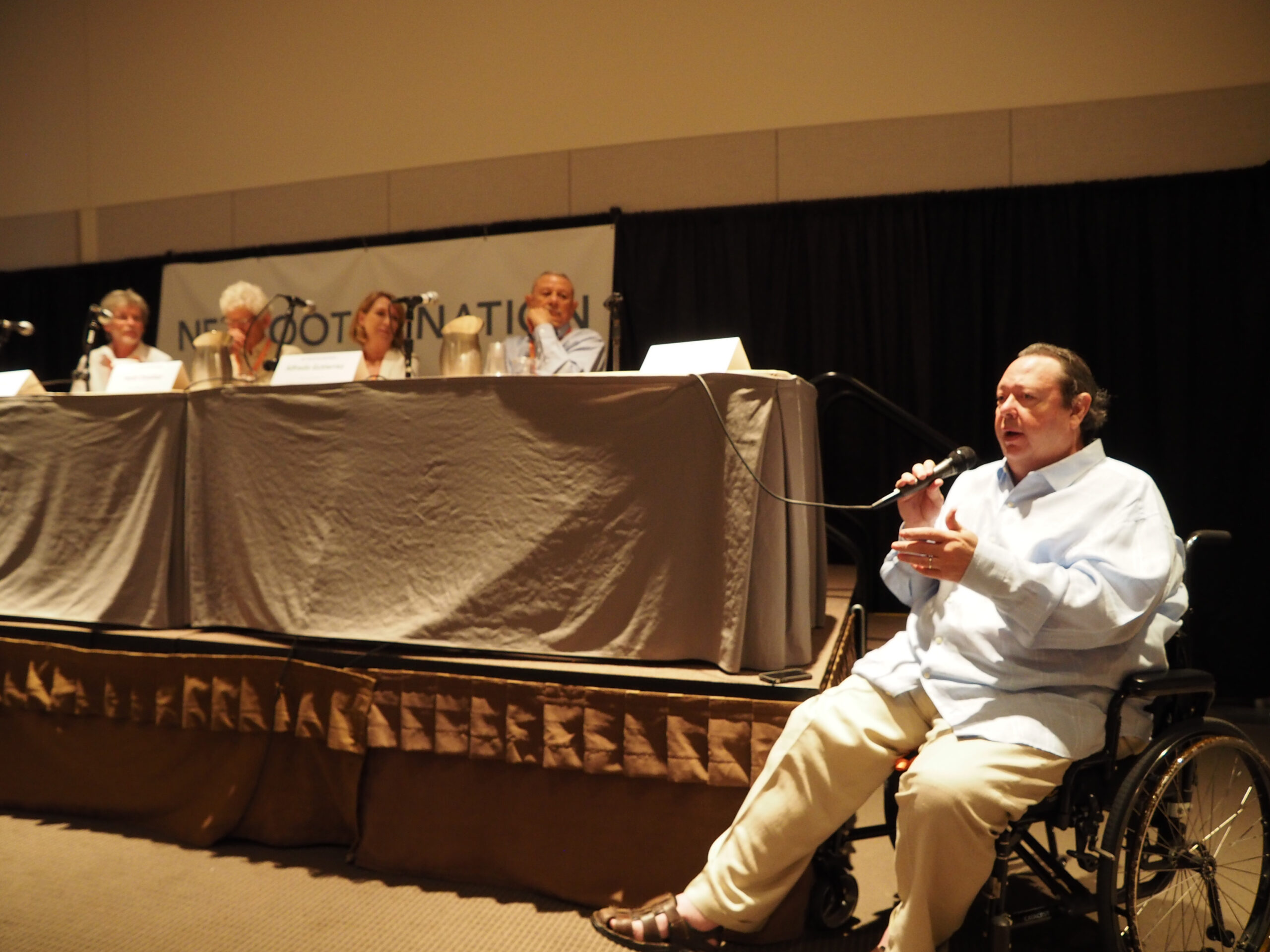Good morning from Phoenix! Our live coverage of Netroots Nation continues all day today, the middle day of the convention. The first activities today are breakout sessions, and I’ve decided to attend How Progressive Arizona Became Tea Party Arizona. The synopsis of this panel is as follows:
Arizona entered the Union in 1912 as a progressive state, enshrining in its Constitution citizen power over elected officials in at least three major ways: initiative, referendum and recall.
All have been used repeatedly to enact public policy, recently, for example, in the historic recall of Russell Pearce. Unions have historically been robust in the state and still are today. Yet all statewide elected officials today are Republican, and the state legislature is overrun with Tea Party conservatives. How did this happen? And more importantly, what can be done to revitalize and re-empower progressives and progressive policy?
The panel’s moderator is Joel Wright. Panelists include former State Senator Alfredo Gutierrez, Heidi Osselaer, Dan Shilling, and Pacific Northwest transplant Jon Talton (who writes on economics for The Seattle Times) .
Dan Shilling kicked off the discussion for us by providing a thorough overview of Arizona’s history. He began his remarks with the observation that Arizona has been a home to human beings for thousands of years, despite being the youngest of the lower forty-eight states. Twenty-two tribes still endure today in Arizona, and the Hopi and Navajo Nations are among the first peoples with the largest reservations.
Arizona’s economy has been shaped significantly by industries like agriculture and mining. It also benefited from the United States’ entry into World Wars I and II. Its infrastructure and development were made possible by the people of the United States (think Hoover Dam, Grand Canyon National Park, Central Arizona Project).
In the words of Shilling: “The state could not exist without federal largesse.”
Heidi Osselaer followed Shilling, and gave us an excellent primer on the history of women in politics in Arizona. For decades at the turn of the twentieth century, politics in Arizona (as elsewhere) was considered by men to be the domain of men, and women were not openly welcome in either the Democratic of Republican parties. As a consequence, women got organized through women’s clubs. They worked for causes like suffrage, an end to child labor, and Prohibition.
But a lot has changed between then and now.
In the 1990s, Arizona made history by electing five women to the highest offices in Arizona (governor, secretary of state, attorney general, treasurer, and superintendent of public instruction). Prior to the inauguration of current Republican Governor Doug Ducey, Arizona had had a succession of three women governors: Jane Dee Hull, Janet Napolitano, and Jan Brewer.

Seattle Times columnist Jon Talton, an Arizona native, was the next to speak. Echoing and expanding on Dan’s comments, he reiterated that Arizona entered the Union during the midst of Progressive Era, with a Constitution that provided for the initiative, the referendum, and the recall. Uniquely, Arizona’s Constitution also created an elected body called the Corporations Commission, which is charged with regulating most publicly-owned corporations within the state.
Talton reminded the audience that the Progressives of the 1900s were from a different time, and did not hold all of the beliefs and principles that progressives of today do (though the values they believed in are the same values we believe in).
In the early decades of statehood, Arizona was mostly rural, and run by Democrats. Democratic hegemony lasted through the Depression and World War II, but began to be more competitive during Harry Truman’s presidency, in part due to Truman’s unpopularity. It was during Truman’s last year as president that the state elected libertarian conservative Barry M. Goldwater, turning out longtime U.S. Senate Majority leader Ernest McFarland by a narrow margin.
Alfredo Gutierrez was the last panelist to speak, and focused on the emergence of Arizona’s major cities and suburbs as the centers of population and political power. Pragmatic Democrats and Republicans from urban areas used to work together, once upon a time, to develop institutions like Arizona State University, he said.
But those days are over. The Arizona Republicans of the twenty-first century are an extreme, militant, xenophobic party whose members are impossible to work with… the kind of Republicans who think Joe Arpaio and Donald Trump walk on water.
“We have always been a southern state,” Gutierrez observed.
The panel wrapped up by taking a few questions from the audience. Most of the questions concerned points raised by panelists earlier in the discussion.
The chief concern of the panel and audience members is the weakness of the Democratic Party in Arizona. Republicans have control of statewide offices and also the Legislature, which has resulted in many bad policies getting enacted, with Sb 1070 being the most famous example.
Our movement has not done a good job of organizing new Americans and getting them out to the polls, which is perhaps the most important reason why Republicans continue to win elections in Arizona despite having anti-immigrant views.
“The people who tend to vote in Arizona are old white Anglos,” Talton pointed out.
“Democrats do not have a chance unless you have an Arizona Democratic Party that figures out a way to stand up and fight,” he added, to enthusiastic applause.


Comments are closed.